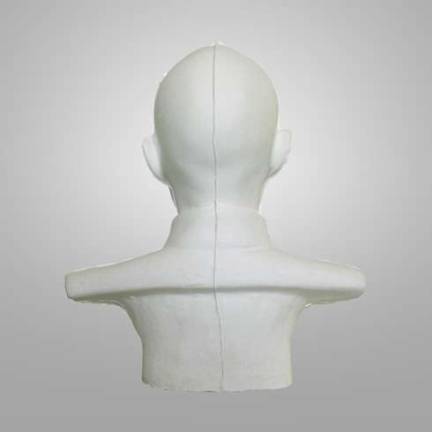New artists and new promise in Guggenheim overview It's exciting to walk into the Guggenheim's new contemporary South Asian exhibit "No Country: Contemporary Art for South and Southeast Asia." There's the glitter of silver, the sheen of gold, and the vibrant colors of a wall-to-wall mural: and there's the promise of a show full of that region's new artists, fresh to many of our American eyes. After the first excitement fades you may ask yourself how, exactly, the Guggenheim selected its artists? Who picked the rather vapid spray of volcanic ash that takes up a whole wall in the last room? (Arin Dwihartanto Sunaryo's Volcanic Ash Series #4). And who decided that the show absolutely needed something, anything to do with the War on Terror and neo-colonialism, and then ticked both those boxes with Norberto Roldan's F16, which juxtaposes an Afghan bombing with William McKinley's speech about colonizing the Philippines?
Both pieces are interesting enough; but it's hard to believe that they represent "some of the most compelling and innovative voices in South and Southeast Asia today." Which is really all we should have in a show so small, and so geographically ambitious.
Some of the show does, indeed, live up to the hype. Navin Rawanchaikul's mural, Places of Rebirth, tells the story of the artist's trip to his ancestral Pakistan along with his Japanese wife and their daughter. The mural has the look of a Bollywood poster, complete with credits for the entire cast; it manages to be playful, political, and highly personal.
Four Pieces of White
, by the husband-and-wife team Wah Nu and Tin Win Aung, is another stand-out. The series shows Aung San, Myanmar's independence hero and father of Aung San Suu Kyi, in painting and sculpture and grainy video. Whatever the format, Aung San is blurred and distant as any collective memory. You may know everything, or nothing about him; this series will make you think of your own lost heroes.
Vincent Leong's Keeping Up With the Abdullahs #1 and #2 show two families ? one ethnically Chinese, the other ethnically Indian ? from Malaysia's minority groups. Both families are dressed in Islamic clothing, hinting at the pressure to fit in with Malaysia's Muslim majority. And yet, these photos would work regardless of what the audience knows about Malaysian clothes. The subjects stare out at us, each person a complete individual and yet completely a part of the family group. They're universal. The same cannot be said, alas, for Tang Da Wu's Our Children. How you feel about this piece will probably depend on how much you like reading captions. The work is a large glass table, set with a bottle of milk; below it is a much smaller glass table. The caption helpfully explains that the piece "references a story from traditional teochow opera in which a young boy experiences a humbling moment of enlightenment at the sight of a genuflecting baby goat suckling at its mother." For some visitors, this will appeal. Others will feel that art should not need to be decoded. Sometimes, a little bit of cleverness goes a long way.
